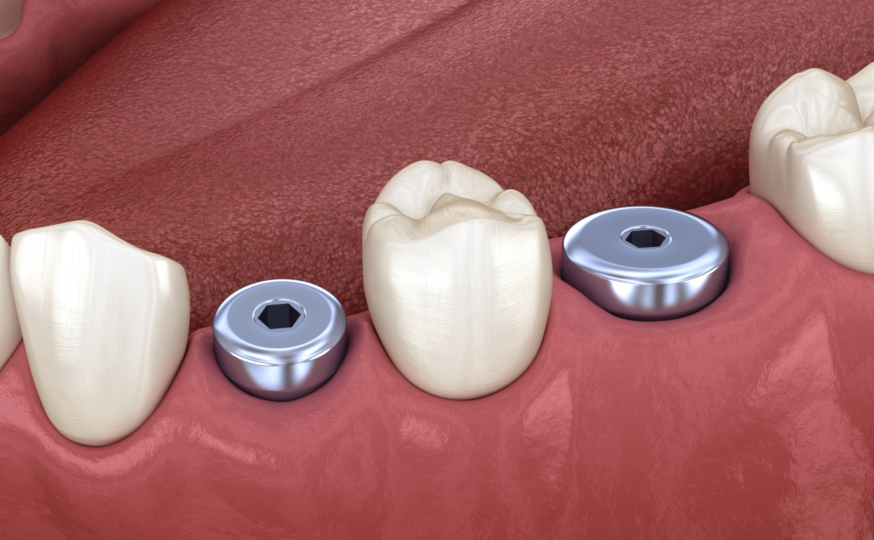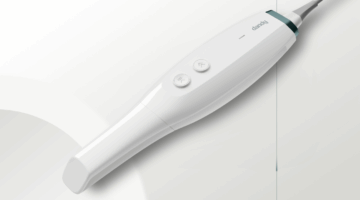Both healing abutments and cover screws are transitional dental implant parts used to keep gums, blood, or debris from entering the implant hole, in this article we’ll cover using healing abutments vs cover screws.
What is a healing abutment?
Healing abutments are usually made of commercially pure titanium or titanium alloy. Healing abutments or healing caps are larger than cover screws and come in different widths and heights. A healing abutment shapes the gums and keeps the implant hole open. After insertion, healing abutments are visible above the gumline.
When is a healing abutment placed?
Depending on the condition and the dentist’s preference, healing abutments may be used in a single-stage procedure or during Stage 2.
- In a single-stage procedure, sometimes referred to as immediate healing abutment placement, healing abutments are placed immediately after the implant body is drilled into the jawbone.
- Healing abutments are inserted immediately before implant crown placement (Stage 2).
Pros of using a healing abutment
- Healing abutments help improve soft tissue contours by providing structure and support.
- They shape the gums. The gums heal around the abutment to keep the implant hole open.
Cons of using a healing abutment
- They are larger than cover screws and sold in varying heights and widths.
- The patient can see and feel the abutment.
- The abutment may unscrew and fall into the patient’s mouth.
Healing abutments: Indications for use
Healing abutments are intended for use with root-form endosseous dental implants to aid in prosthetic rehabilitation.
What is a cover screw?
Cover screws are made of commercially pure titanium or zirconia. They come in different widths and when inserted, do not protrude above the gumline. A cover screw works similar to a manhole cover keeping blood and food debris from entering the implant hole.
When is a cover screw placed?
A cover screw is inserted into the implant body immediately after the implant body is drilled into the jawbone.
Pros of using cover screws
- A cover screw blocks the hole in the top of the implant body to keep gums, blood and debris from entering.
- Cover screws are smaller than abutments, do not show above the gumline, and are undetectable by the patient.
- Cover screws come in varying widths compared to abutments, which come in varying widths and heights.
Both are transitional dental implant parts used to keep gums, blood, or debris from entering the implant hole, in this article we’ll cover using healing abutments vs cover screws.
Cons of using cover screws
Like abutments, cover screws may detach and fall into the patient’s mouth.
Cover screws: Indications for use
Cover screws are intended to be used in the maxilla or mandible connected to the endosseous implant. They protect the internal threads and implant body during the healing phase and keep the soft tissue clear of the implant interface.
Healing abutments vs cover screws
Some dentists prefer to place the healing abutment during implant body placement, using the abutment as a substitute for the cover screw. Other dentists prefer to place a cover screw during implant body placement, believing the cover screw will allow the gums to heal more efficiently.
Using healing abutments in digital implant restorations
Dentists, oral surgeons, periodontists, and prosthodontists often use CBCT imaging (3-dimensional X-ray) and full-mouth impressions (PVS impressions or digital) when placing implants.
Placing implants requires the use of dental implant parts and materials including:
- Implant body / implant fixture
- Cover screw
- Healing abutment (depending on the stage of the implant process)
- Implant crown
An overview of implant placement
1. A titanium implant body is drilled into patient’s jawbone. The dentist may use an implant surgical guide for precision placement.
2. The dentist will either cover the implant with gum tissue or place a healing abutment. Both healing abutments and cover screws may be used during the healing and osseointegration stage.
3. The dentist and patient wait three-to-six months for proper healing and osseointegration.
4. The dentist unscrews the healing abutment and replaces it with a different abutment that connects the implant body to the implant crown.
5. The crown is placed on top of the new abutment. The tooth is restored and the implant process is completed.
Digital dental implants with Dandy
Dandy offers a wide selection of high-quality dental implant parts and materials.
We help dentists simplify implant placement with a fully digital workflow and provide everything you’ll need to optimize your implant process including:
- A 3D-printed model for physical fit check on your patient
- Free scan bodies
- Dedicated implant designers
- Consultation with our expert implant planning team.
- Support for complex cases
- A healing abutment (if requested)



